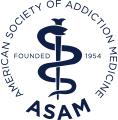Understanding Anxiety
Learn About Anxiety
Anxiety disorders are a group of mental health disorders that are marked by feelings of anxiety, worry, fear, and/or apprehension that leads to behavior changes or an inability to function in a healthy manner throughout the day. When individuals are battling with one or more anxiety disorders, they tend to steer clear of situations where these emotions are dredged up, which can ultimately make their symptoms worse.
There are a variety of different types of anxiety disorders, including:
Generalized anxiety disorder occurs when individuals have an exceptional amount of concern and apprehension regarding different events or activities. This type of anxiety disorder is characterized by the expectation that something upsetting will occur, however, that concern is grossly disproportionate to the actual chances of something happening. Those who have generalized anxiety disorder often notice that their overwhelming worry interrupts their daily functioning, as they are unable to push past the emotions they are experiencing.
Separation anxiety disorder is a type of anxiety disorder that occurs when individuals are flooded with anxiety or fear surrounding being separated from a person or people they care about. These individuals might grow concerned that their loved ones are in jeopardy, causing them to go to extensive measures to keep in touch with them. When separation does occur, or when separation is about to occur, those who have this type of anxiety disorder experience upsetting symptoms that can cause them to lose the ability to function.
Social anxiety disorder, which is also commonly referred to as social phobia, exists when an individual experiences severe fear or anxiety surrounding social situations. Individuals with this disorder often fear that they will come under scrutiny from others, and struggle with distressing emotions and behaviors of avoidance because of their fears. These individuals tend to believe negative consequences will occur when in social situations. The amount of distress that an individual goes through when suffering from this type of anxiety disorder will vary from individual to individual.
Panic disorder occurs when individuals battle with continued panic attacks. These attacks involve a sudden sensation of extreme fear that includes a variety of physical and cognitive symptoms. For instance, someone who is having a panic attack might sweat, develop a pounding heart, have chest pain, experience feelings of choking, feel light-headed or unsteady, experience shortness of breath, have nausea, tremble, and shake. In addition, panic attacks can bring about derealization, where an individual feels as though he or she is living within a false reality. Furthermore, depersonalization can occur and cause an individual to feel detached from his or her surroundings. In many instances, panic attacks and their symptoms can cause individuals to feel as though they are losing control or dying. The symptoms and frequency of panic attacks can vary, but those who suffer from tem often struggle with ongoing fear that a panic attack will occur.
Specific phobia is a type of anxiety disorder where individuals experience a great deal of fear surrounding specific objects or events. These feelings can cause individuals to stop participating in activities in order to avoid having to face the things they fear. While many people fear different things, those who suffer from specific phobia tend to have upsetting feelings surrounding the things they fear to an extent that is not realistic to the actual risk that is involved.
Agoraphobia is diagnosed in those who fear things like being stuck in enclosed spaces, open spaces, being in a crowd, using public transportation, standing in line, or being away from their home. Individuals with this disorder often fear being put in situations where they will be unable to escape and become panicked as a result.
Any type of anxiety disorder can be tremendously stressful for an individual. Sadly, there are many in this position that turn to drugs and alcohol in response to their condition as a means of self-medicating. When this occurs, treatment must be sought to address the anxiety disorder and the co-occurring substance abuse problem so that healing and recovery can be achieved.
Statistics
Statistics of Anxiety
The Anxiety and Depression Association of America (ADAA) reports that roughly 40 million adults over the age of 18 suffer from anxiety disorders. In other words, 18% of the adult population is facing this mental health issue.
Cuases & Risk Factors
Causes & Risk Factors of Anxiety
The causes and risk factors that can add to an individual’s likelihood of developing an anxiety disorder can include the following:
Genetic: Those with a family history of anxiety disorders are at a heightened risk for grappling with a similar issue themselves. Especially in those with a first-degree relative with this type of mental health history, there is a greater chance for the symptoms of an anxiety disorder to impact a person’s life.
Environmental: The onset of anxiety disorders can be influenced by environmental factors. Notable life stress, such as the loss of a loved one, can bring about the onset of separation anxiety disorder. Negative and/or traumatic events surrounding an object can trigger symptoms of a specific phobia. Maltreatment during childhood or experiencing other adversities during this time can serve as environmental factors for the onset of social anxiety disorder. Interpersonal stressors, stress linked to one’s health and wellbeing, and battling with numerous forms of abuse can increase an individual’s chances of developing panic disorder. Agoraphobia can also be brought on by negative childhood events.
Risk Factors:
- Being the victim of physical or sexual abuse
- Being female
- Suffering from maltreatment or adversity during childhood
- Family history of anxiety disorders
- Parental overprotection during childhood
- Negative affectivity (neuroticism)
- Smoking (noted as being a risk factor for panic attacks)
- Behavioral inhibition
Signs & Symptoms
Signs & Symptoms of Anxiety
The signs and symptoms linked to an anxiety disorder can vary based on a number of things, such as the type of anxiety disorder a person has and whether or not an individual is also experiencing another co-occurring disorder. Some of the many signs and symptoms that those with anxiety disorders can exhibit can include:
Behavioral symptoms:
- Refusing to be separated from major attachment figures
- Refusing to leave one’s home
- Restlessness
- Avoiding certain people, places, situations, objects, or events
- Being unable to adhere to daily responsibilities
- Frequent absences from work or other obligations
- Isolating oneself from others
Physical symptoms:
- Pounding heart
- Sweating
- Dizziness
- Fatigue
- Muscle tension
- Sleep disturbances
- Vomiting nausea
- Stomachaches
- Headaches
Cognitive symptoms:
- Racing thoughts
- Nightmares
- Paranoia
- Concentration difficulties
- Experiencing an inability to control one’s worry and apprehension
- Having the sensation of one’s mind going blank
- Depersonalization
- Derealization
- Suicidal ideation
Psychosocial symptoms:
- Low self-esteem
- Feelings of helplessness and hopelessness
- Fear
- Worry
- Apprehension
- Mood swings
- Nervousness
- Irritability
Effects
Effects of Anxiety Disorder
When individuals do not obtain the appropriate treatment for anxiety disorder symptoms, they are left vulnerable to experiencing a number of upsetting effects as a result. Some of these effects can include the following:
- Decreased quality of life
- Deteriorated relationships
- Decline in overall physical wellbeing
- Engaging in self-harming behaviors
- Onset of new or worsening mental health symptoms
- Beginning to use and abuse drugs and/or alcohol
- Familial strife
- Decline in occupational performance
- Social withdrawal
Co-Occurring Disorders
Anxiety & Co-Occurring Disorders
Those who battle anxiety disorders are more susceptible to abusing substances in an effort to relieve themselves from the stress that their symptoms bring on. In addition, those who have anxiety disorders might also experience symptoms of other mental health conditions, too. Some of the disorders that are known to co-occur with anxiety disorders can include:
- Obsessive-compulsive disorder (OCD)
- Other anxiety disorders
- Personality disorders
- Substance use disorders
- Bipolar disorders
- Eating disorders
- Depressive disorders







